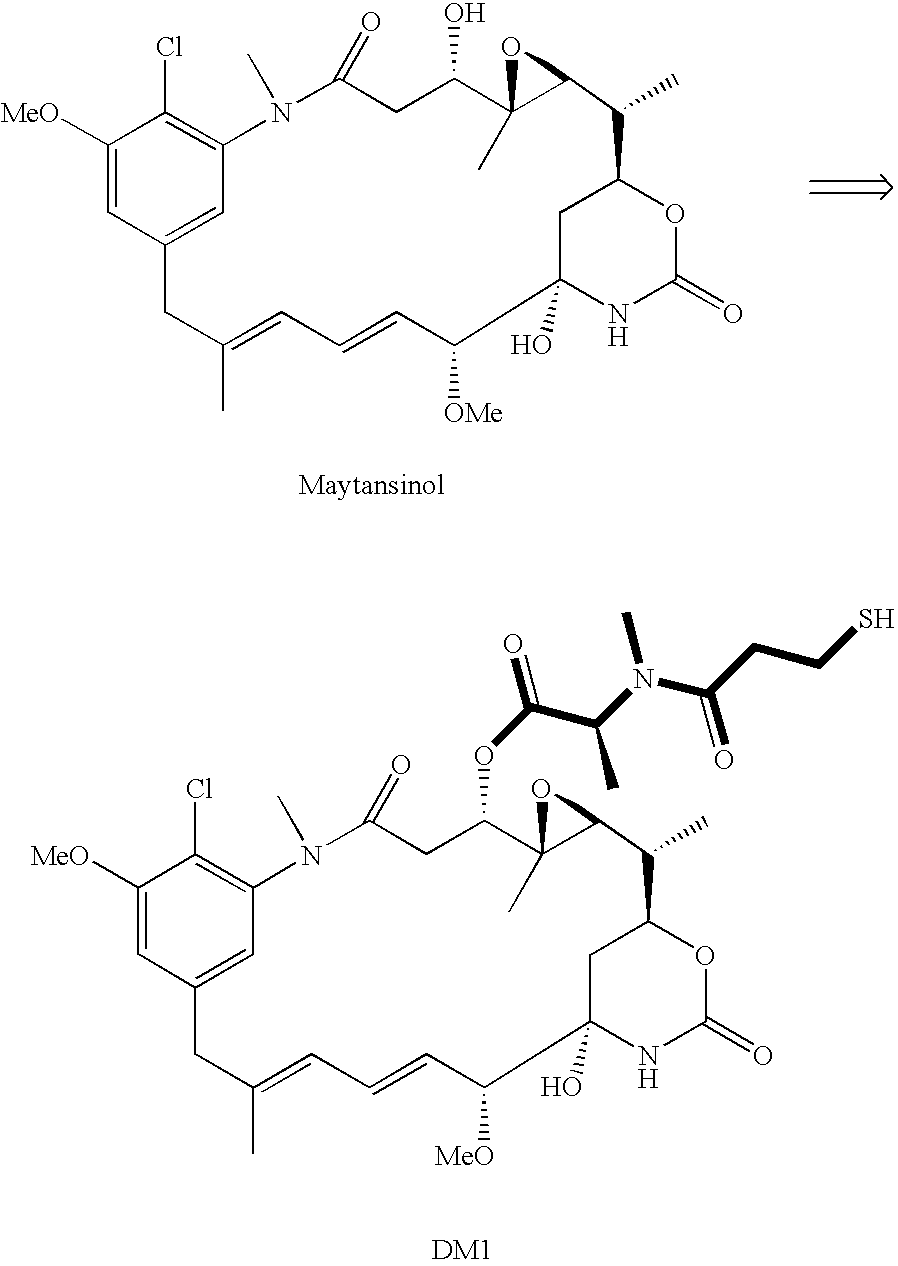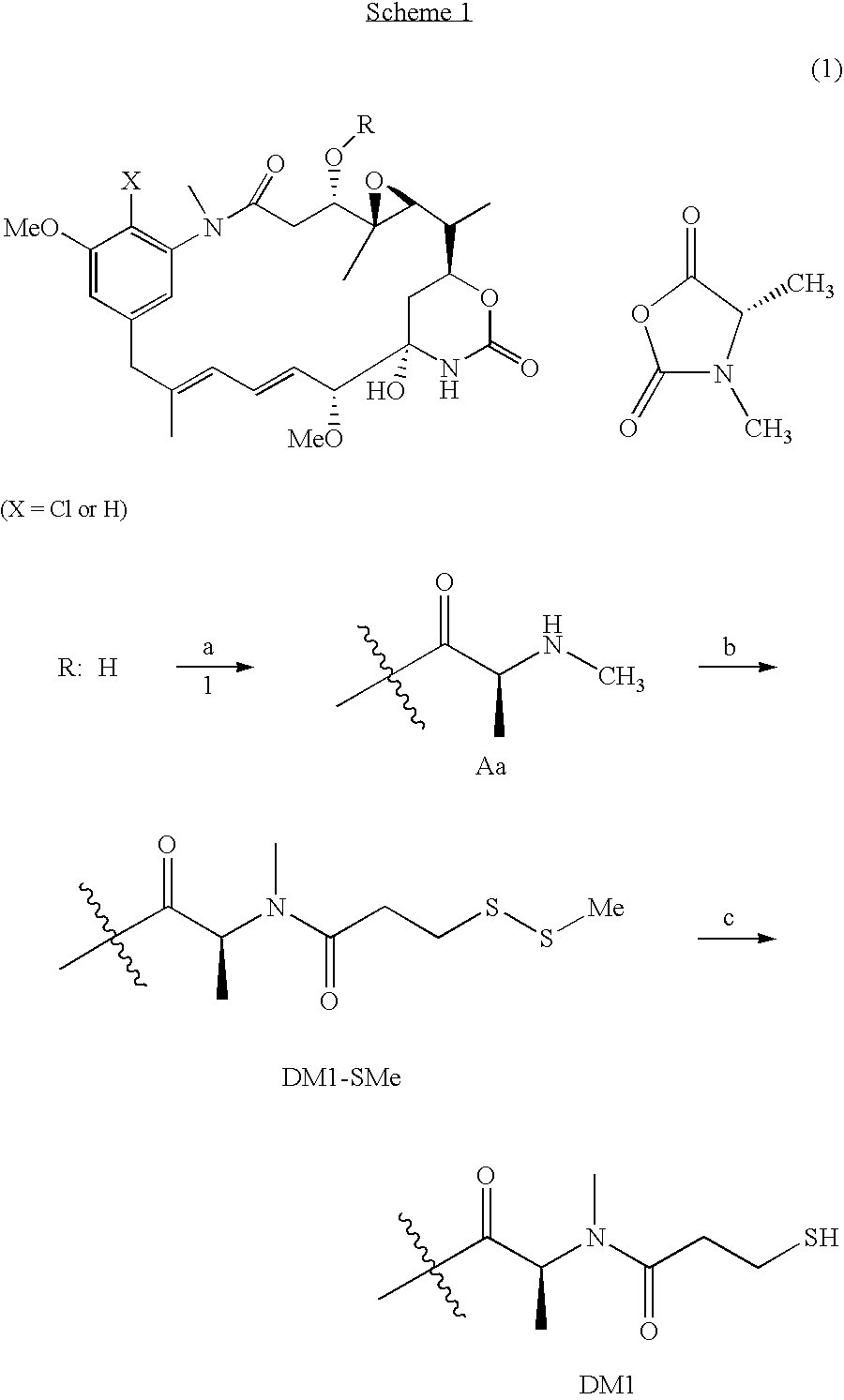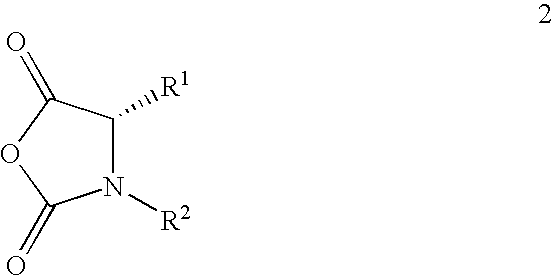Method of acylating maytansinol with chiral amino acids
a technology of acylating and maytansinol, which is applied in the field of making maytansinoids with chiral amino acids, can solve the problems of low yield of desired product, unfavorable diastereomer removal, and chiral center epimerization of side chain chiral centers
- Summary
- Abstract
- Description
- Claims
- Application Information
AI Technical Summary
Benefits of technology
Problems solved by technology
Method used
Image
Examples
Embodiment Construction
[0008]This invention relates to a method of making maytansinoids, such as DM1 or DM4. The key step in the method is the coupling of maytansinol or an analogue thereof with a chiral 4-alkyl-1,3-oxazolidine-2,5-dione or 3,4-dialkyl-1,3-oxazolidine-2,5-dione. These 1,3-oxazolidine-2,5-diones are N-carboxyanhydride derivatives of α-amino acids (NCAs). It now has been found that NCAs, which may be obtained from enantiomerically pure naturally-occurring amino acids, are especially useful coupling partners because the configuration of the amino acid chiral center is highly preserved in the coupling reaction. The present invention is exemplified using (S)-3,4-dimethyl-1,3-oxazolidine-2,5-dione (1, N-methylalanine-N-carboxyanhydride or N-MeAla NCA), which is particularly useful for the preparation of DM1 and DM4. The coupling step with 1 provides, with high diastereomeric purity, a maytansinol ester intermediate having an N-methyl-alanine side chain. The intermediate obtained from the NCA co...
PUM
| Property | Measurement | Unit |
|---|---|---|
| reaction temperature | aaaaa | aaaaa |
| temperature | aaaaa | aaaaa |
| temperature | aaaaa | aaaaa |
Abstract
Description
Claims
Application Information
 Login to View More
Login to View More - R&D
- Intellectual Property
- Life Sciences
- Materials
- Tech Scout
- Unparalleled Data Quality
- Higher Quality Content
- 60% Fewer Hallucinations
Browse by: Latest US Patents, China's latest patents, Technical Efficacy Thesaurus, Application Domain, Technology Topic, Popular Technical Reports.
© 2025 PatSnap. All rights reserved.Legal|Privacy policy|Modern Slavery Act Transparency Statement|Sitemap|About US| Contact US: help@patsnap.com



